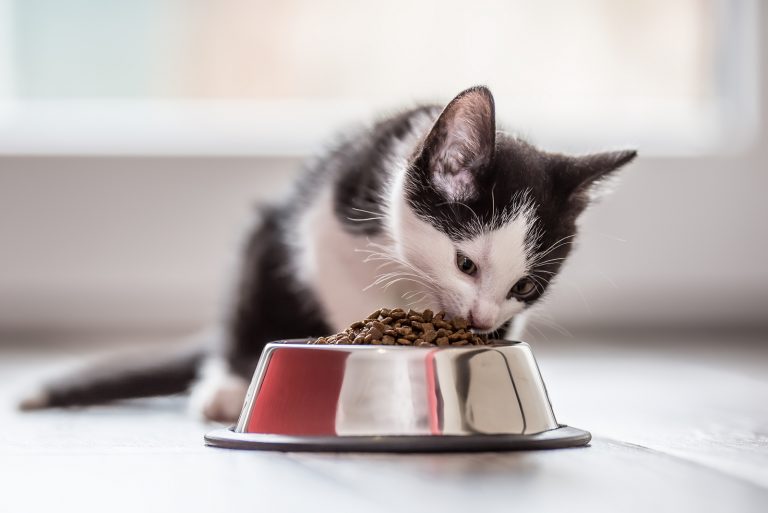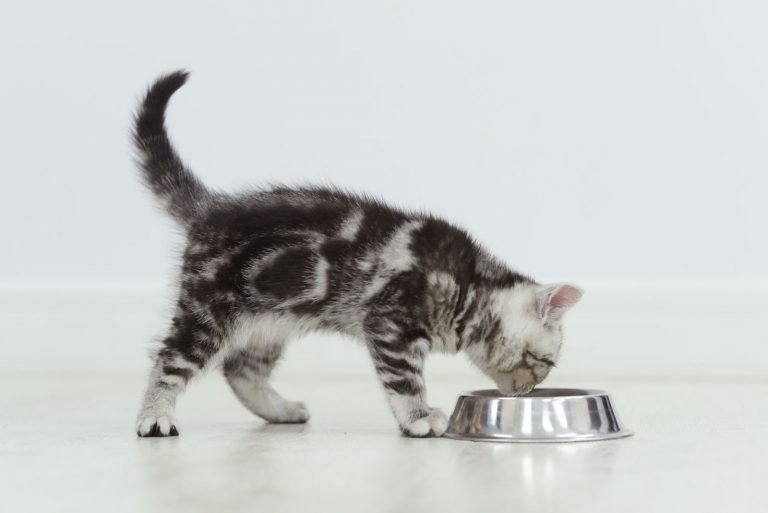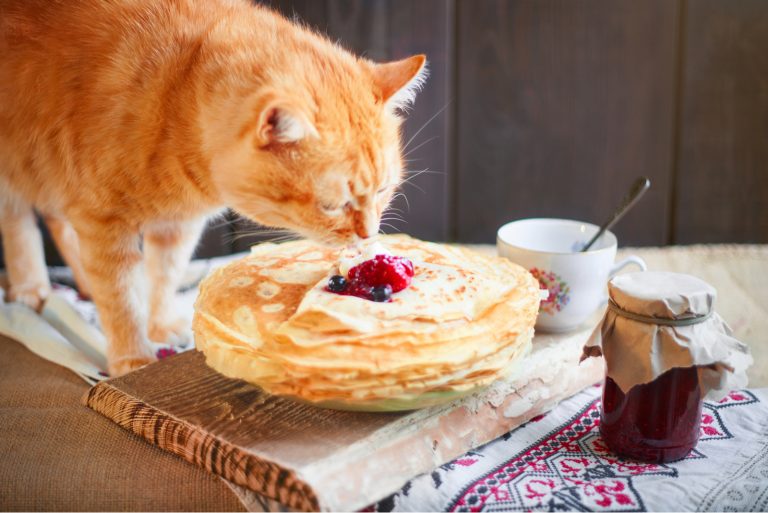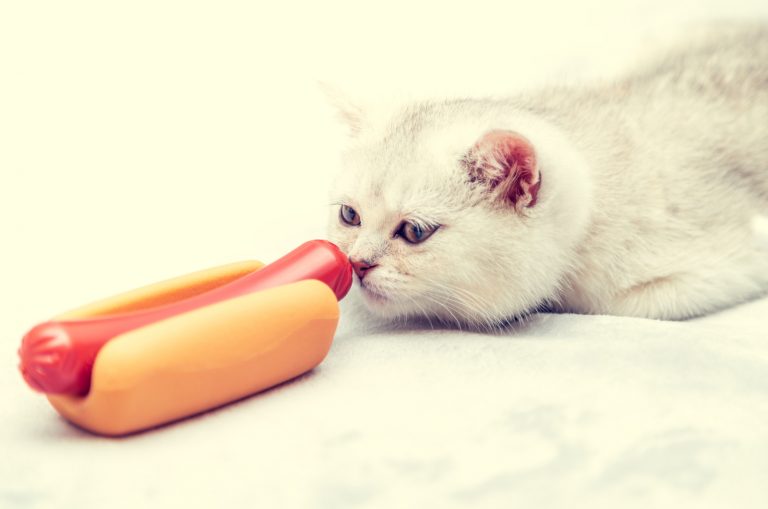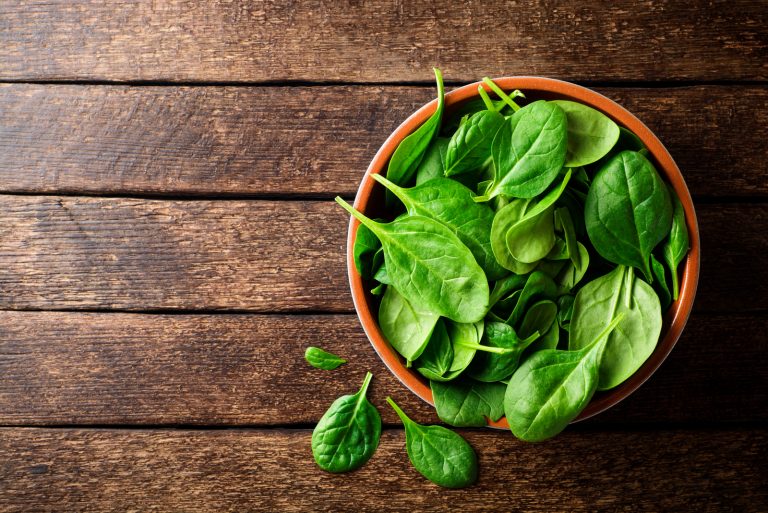Can Cats Eat Marshmallows? Here Is Your Answer!
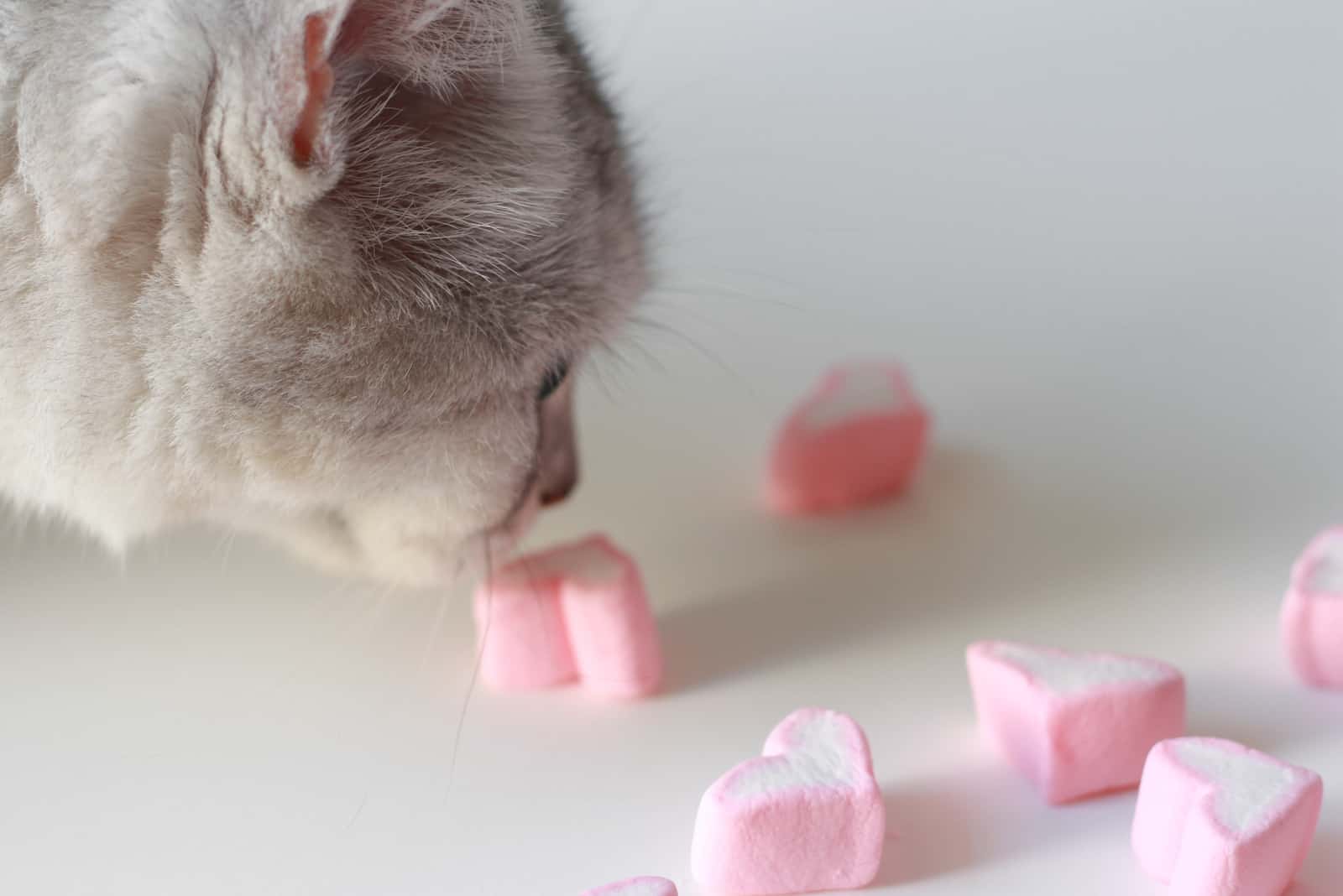
Most of us love marshmallows, right? They’re soft and fluffy, smooth and sweet. How can you say no to them?
You might think “If I love this yummy treat so much, my cat will surely love it too!”
Can cats eat marshmallows?
To give you a short answer – Yes, cats technically can eat marshmallows. However, this does not mean they should!
Marshmallows are by no means toxic for your cat, but they are very unhealthy. You can, if you want, give your cat a small marshmallow here and there, but it should not be your cat’s daily treat!
I personally love eating marshmallows, but does this mean I regularly give my cats marshmallows? Absolutely not!
Keep on reading to find out why you should not give your cat marshmallows and what eating a large amount of them can do to your cat’s health!
Can Cats Eat Marshmallows?
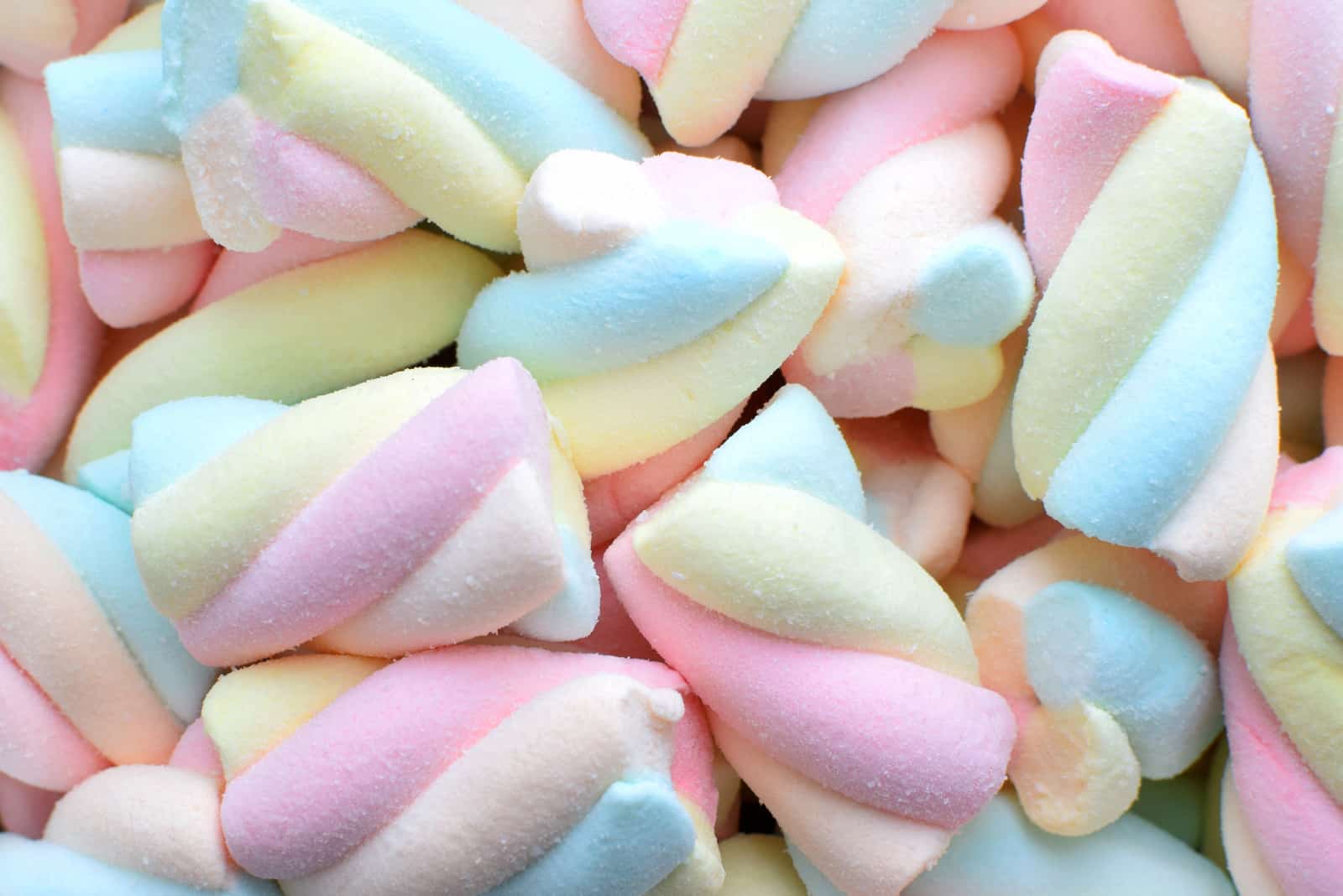
Marshmallows are a popular confection that might be found in your kitchen pantry, especially if you have a sweet tooth. The sweet taste and fluffy texture is totally unique.
As a kind hearted cat owner, you might be tempted to give a couple of marshmallows to your cat every time you eat them…
In this case, quantity matters!
Giving your cat marshmallows:
• Occasionally – is okay.
• Very often – is advised against!
This Is Why You Should Not Give Your Cat Marshmallows Often!
A healthy cat’s diet should consist of:
• High amount of protein
• Medium amount of fat
• Low amount of carbohydrates
Let’s see how marshmallows fit into these 3 requirements!
100g of marshmallows contain:
• 1.8g of protein
• almost no fat
• 81g of carbohydrates
Do you see now why marshmallows are not the best option for your cat? Obviously, they are not toxic to your pet, they just aren’t healthy.
Marshmallows have a very low amount of protein, yet cats need a lot of protein. Even worse is the large amount of carbohydrates; cats should consume only minor amounts of carbohydrates (sugars)!
What Exactly Are Marshmallows Made Of?
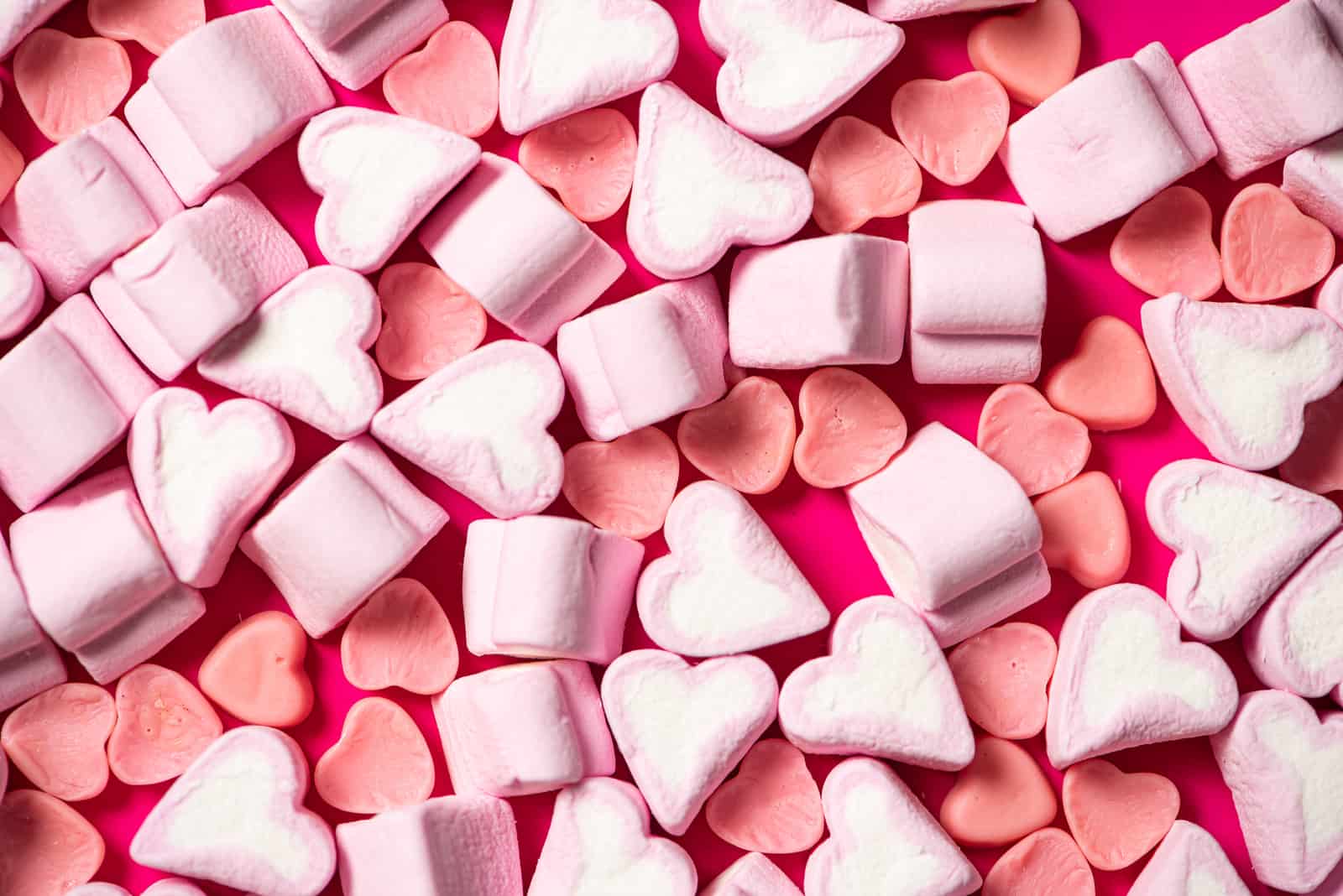
As I mentioned, marshmallows contain a large amount of carbohydrates and a very low amount of fats and proteins. As well as this, there are other food ingredients that might alarm you, such as xylitol.
What precisely are marshmallows made of? Below, I provide a complete list of the various substances that can be found in marshmallows.
Keep in mind that the ingredient list will depend on the manufacturer, but these are the main items that are found in almost all marshmallows.
List of Ingredients:
Sugar
Sugar is the major component of marshmallows, accounting for over 50% of marshmallow content.
On the other hand, cats absolutely should not have a lot of sweet treats. Due to their ancestry and body requirements, their diet should be very low in carbohydrates (sugars).
Cats also lack sensitive receptors for sugar, so they actually cannot taste it like humans do. So there’s really no point in cats eating sugar, considering it is not a nutritional requirement and they can’t even experience the yummy taste of sugar.
Related: Can Cats Eat Honey? Health Benefits And Side-Effects
Gelatin
Gelatin is a common food ingredient. It is used as a stabilizing, thickening, and gelling agent in foodstuffs. It does not add any taste, smell or color to the food. It is almost entirely composed of protein from animal body parts. It is even considered healthy and some health benefits have been noted.
It is the most important component of marshmallows, because of its gelling and thickening function.
This gelling agent traps all the components in place, and this is the reason for a marshmallow’s stretchy texture. Agar is a substitution that vegetarians and vegans can use, but the texture of marshmallows will not be the same.
When it comes to gelatin, there is absolutely no need for concern about cats eating it, since it is even considered to be healthy!
Corn Syrup
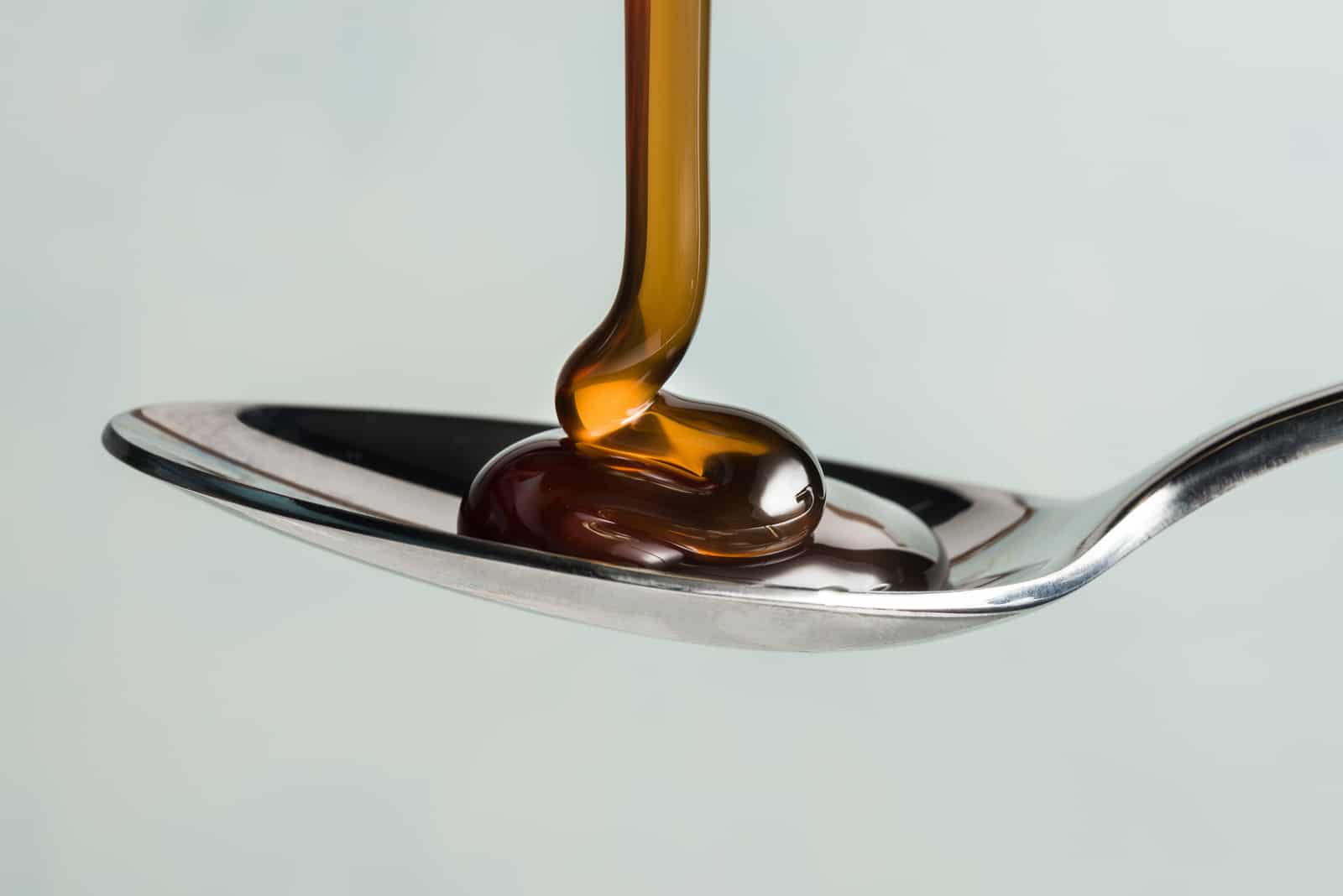
This is also known as glucose syrup to confectioners. It is a food syrup made from corn starch.
Corn syrup is frequently used in the food industry to soften the texture of food, as a food thickener, as a sweetener, to add volume, and to enhance flavor of food.
Corn syrup is mostly made of sugar. In 100 grams of corn syrup, there are 78 grams of sugar. This is a pretty large proportion, so you can conclude yourself that a lot of corn starch is not good for cats.
Corn starch is essentially sugar, and sugar is bad for your cat. It is not something you should avoid completely, but know that it is not very healthy and limit it accordingly.
Sodium
This might come as a surprise, but marshmallows contain sodium, which is bad news for cats with a low sodium tolerance.
Salt is needed for maintaining a cat’s health, but too much of it is always bad. Cats get their daily sodium intake from their cat food, so there is no need for extra sodium intake.
In 100 grams of marshmallows, there is 80mg of sodium. In one large marshmallow (7 grams) there is 5.6mg of sodium.
Too much salt is actually very toxic for cats and dogs! Even a teaspoon of salt can be very dangerous for cats!
Again, moderation is key. One marshmallow will not cause problems for your pet, but too many of them will!
To learn more about why salt is not good for cats, read Happy Whisker’s article on can cats eat salt.
Artificial Sweeteners
Artificial sweeteners are food additives that are a replacement for sugar. Essentially, they provide the same taste as sugar, but contain less calories.
You can buy them in many forms, such as in pills or powders. You probably know some artificial sweeteners such as stevia and saccharin. They are completely safe for usage in moderate quantities and are not associated with any diseases.
However, most of the research into the potential effects of artificial sweeteners revolves around humans, not cats. There is one artificial sweetener that is extremely bad for cats, but completely normal for humans and this is called xylitol.
Xylitol
Xylitol is an artificial sweetener that is FDA approved as a safe food additive. It may be safe for humans, but how about cats? A set amount of xylitol will not have the same effect on humans and on cats. There are even side effects for humans (such as diarrhea or gas) if they consume a lot of xylitol, let alone cats.
For cats, even a small amount of xylitol can cause hypoglycemia, seizures, liver failure, and other conditions. Considering the toxicity this artificial sweetener has for cats, it would be best to not give any marshmallows containing xylitol to your cat.
When it comes to artificial sweeteners, jello is another potential cat treat might also contains xylitol, so I highly recommend reading on can cats eat jello as well!
How Many Calories Are In One Marshmallow?
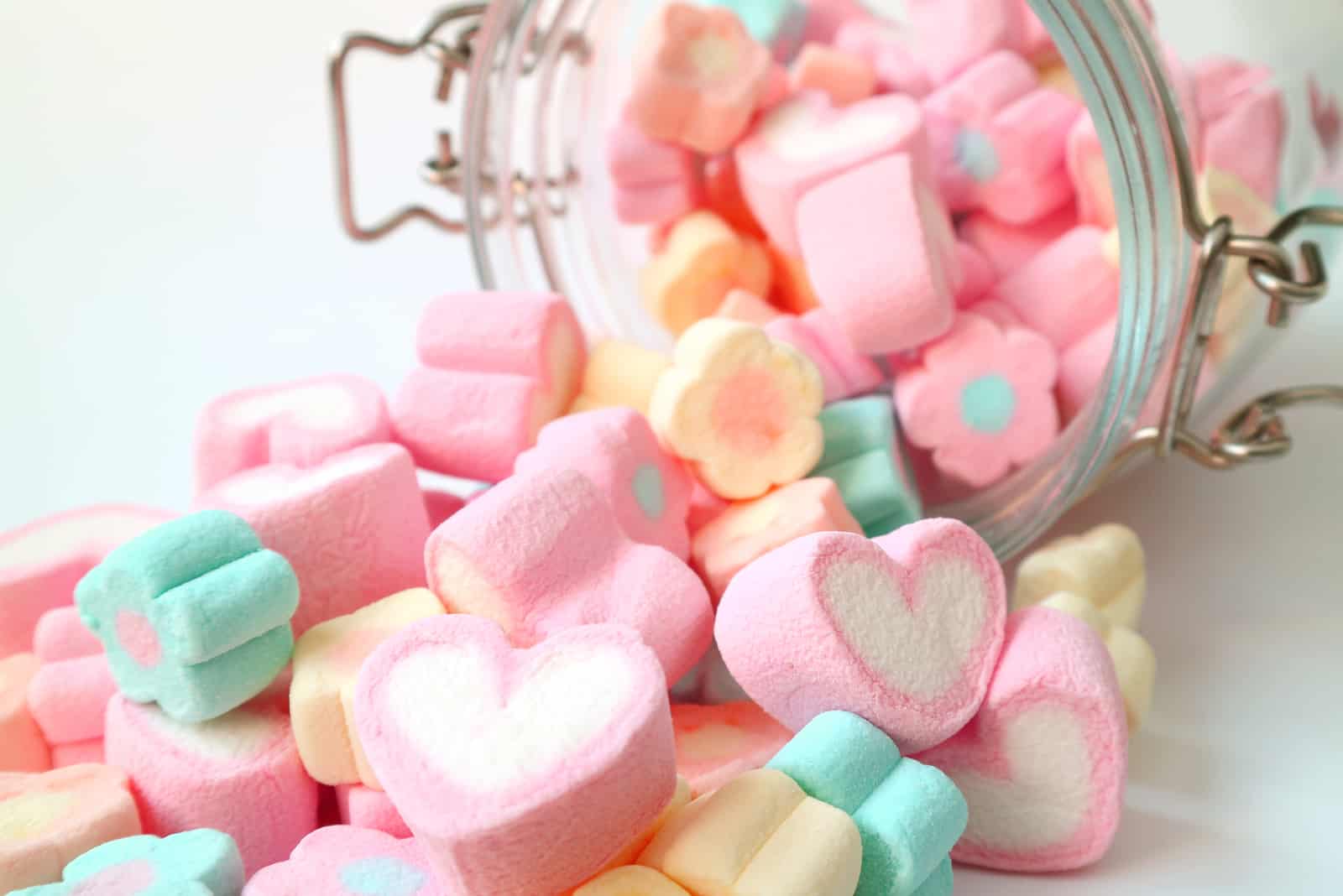
One large marshmallow weighs 7.2 grams, while smaller ones are usually 4 grams.
In one large marshmallow, there are 23 calories.
One marshmallow of 7.2 grams contains:
• 6g of carbohydrates
• 0.1g of protein
• almost 0g of fat
• small amounts of other ingredients
So most of the calories you get by eating one marshmallow are coming from the sugar content.
Are Marshmallows Poisonous For Cats?
No, marshmallows are not poisonous for cats.
Remember that both cats and dogs are sensitive to an artificial sweetener called xylitol. For dogs, even tiny amounts of xylitol can be deadly! While your cat is not as sensitive to xylitol toxicity as their canine friends, they should still avoid it.
Even though one marshmallow that contains xylitol will not kill your cat, you should not let your cat eat any xylitol. Why risk it in the first place?
4 Reasons You Should Avoid Giving Marshmallows To Your Cat!
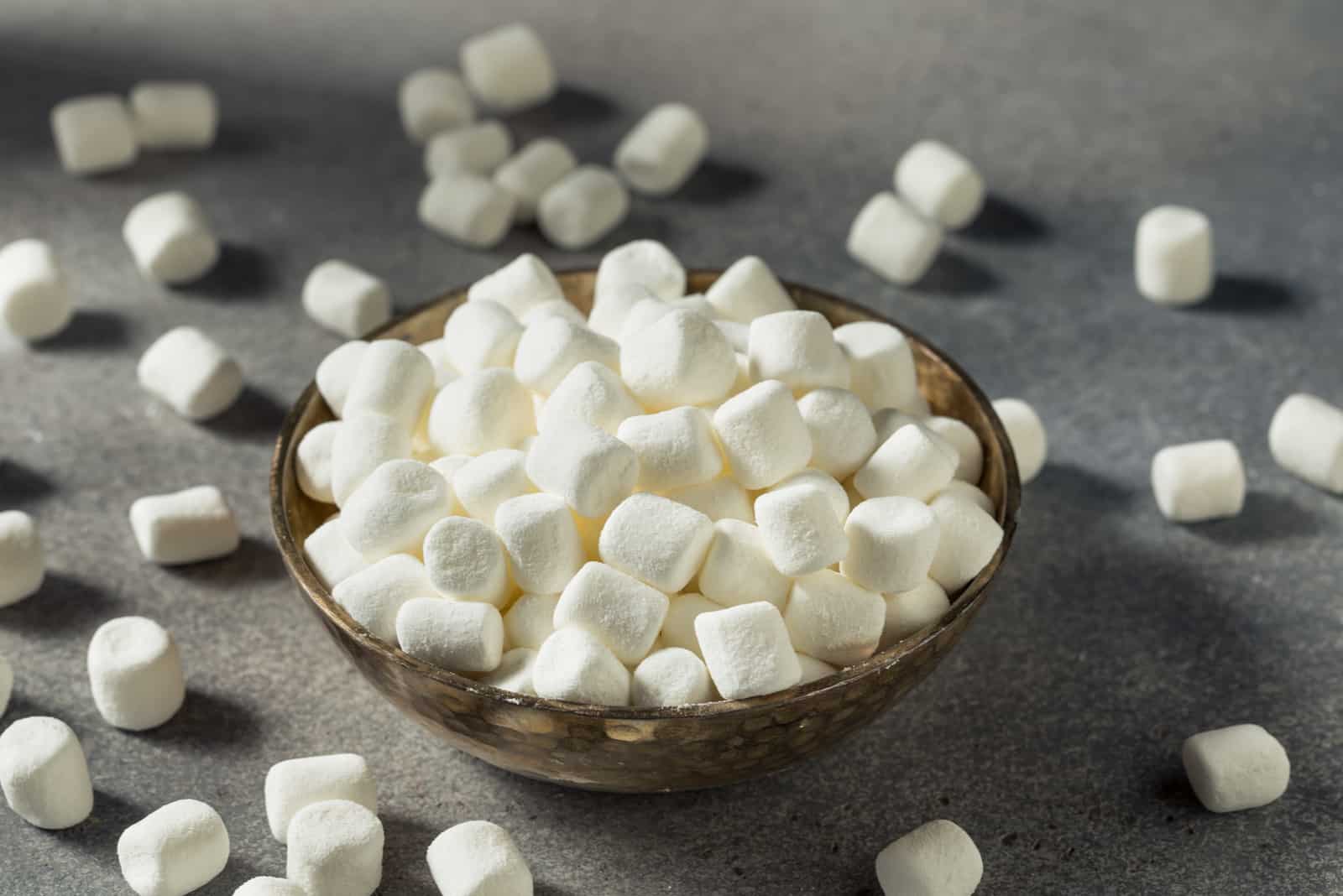
Marshmallows are not a “forbidden” food, they are simply not good for your cat’s health if given in large quantities. Considering there are lots of better treat options than marshmallows, try avoiding them completely.
Here are 4 reasons why marshmallows are not good for cats:
1. Marshmallows Are Possible Contributors To Feline Obesity
Feline obesity is a growing problem worldwide.
Losing weight is not the easiest task for either cats or us! In order to avoid feline obesity, you need to prevent it from happening. As cat owners, this is part of the job.
If you are the one feeding your house cat, then you have the responsibility of maintaining its weight and health.
Don’t get me wrong – giving your cat a marshmallow here and there is not going to make your cat obese!
If you give them sweet treats like marshmallows daily and your cat has a bad diet overall, then weight gain is inevitable.
Here are a couple of tips for preventing your pet having health issues due to weight gain:
• Reduce the amount of food that has a high sugar content
• Sugary treats should be replaced with healthier ones
• Educate yourself on what a healthy cat diet should look like
• Control portion sizes carefully
• Increase your cat’s physical exercise
2. They Are Potentially A Choking Hazard
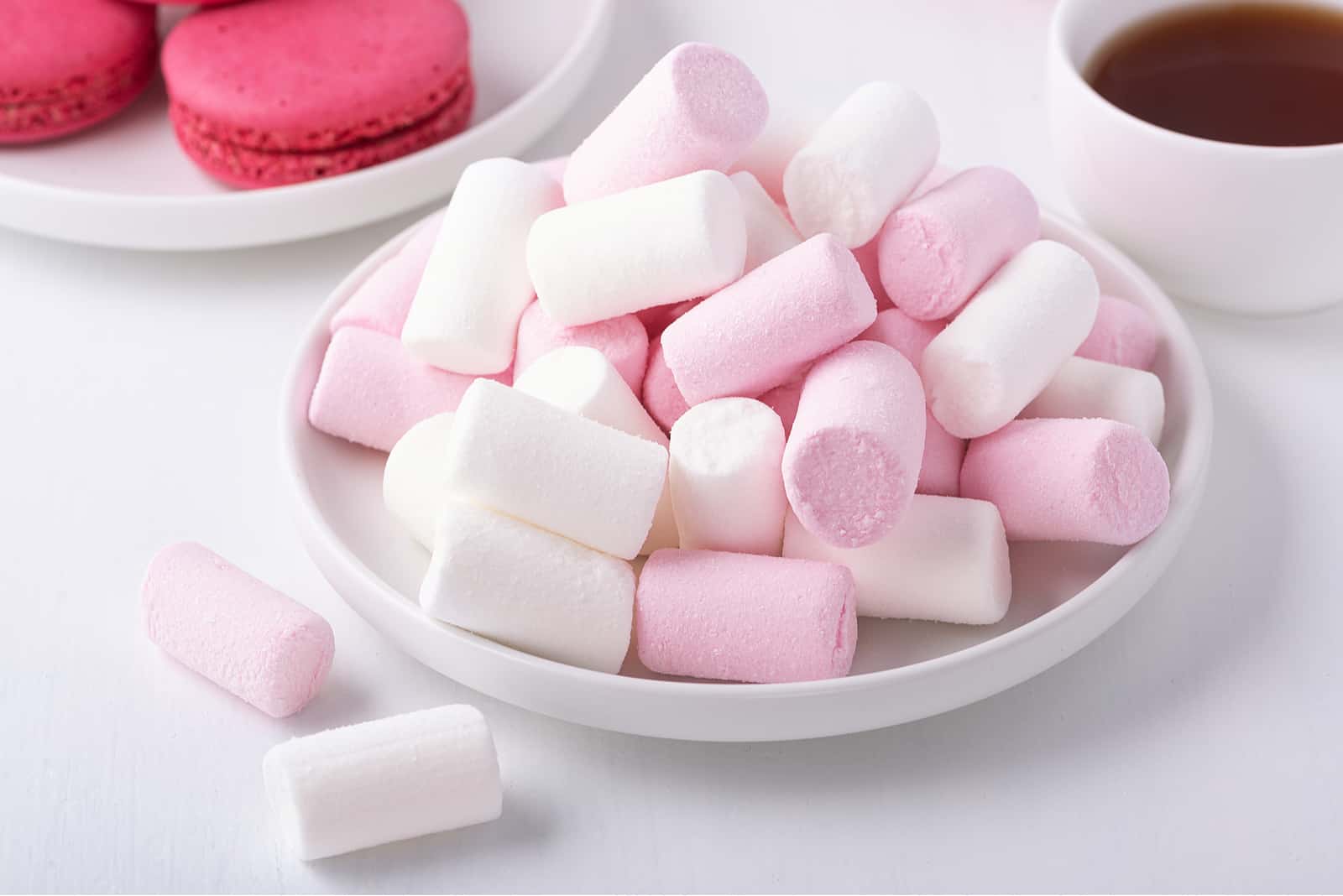
Who would have thought that the reason we humans love marshmallows is the same reason cats can’t have them. What do you think it is?
If you’ve guessed that the reason is their squishy texture, you’re right.
Firstly, they are fluffy, meaning they can be squashed. That means they can take the shape of your cat’s throat and get stuck there.
Secondly, they are sticky, meaning that when they’re stuck, they cannot pass down the throat so easily.
This means that marshmallows can be a choking hazard, and that’s another reason why you should avoid giving them to your cat. For the same reason, parents don’t give marshmallows to kids under the age of 3 and some even say that they should not be given to kids under the age of 5.
So, in order to maintain your cat’s health, avoid this terrible situation by not giving your cat sticky candy.
3. They Have Absolutely No Nutritional Value
You’ve seen the ingredient list: lots of sugar, gelatin, corn syrup, cornstarch, and artificial sweeteners.
You don’t have to be an expert to know that none of the ingredients of a marshmallow is an essential nutrient.
Marshmallows contain absolutely no vitamin a, vitamins b, vitamin c, vitamin d, calcium, iron, magnesium or… anything nutritionally beneficial really.
In general, marshmallows have no nutritional benefits for your cat (or you). I would even consider them to be junk food. Would you?
4. There Are Healthier Cat-Treat Options
Sugary treats are a no-no for cats. Cats do not actually taste the sweetness of sweet treats. Also, sugar is bad for cats in general. Your cat probably only likes the texture of a particular sugary treat, not the actual taste.
Nevertheless, there is a wide range of healthy cat treats out there. I am sure you already know some treats your cat enjoys that are way healthier than marshmallows.
Store-bought cat treats might be the best option, since you have a lot to choose from, you know they will be cat-safe, and your cat will absolutely love them!
What Is The Safe Amount To Give Your Cat?
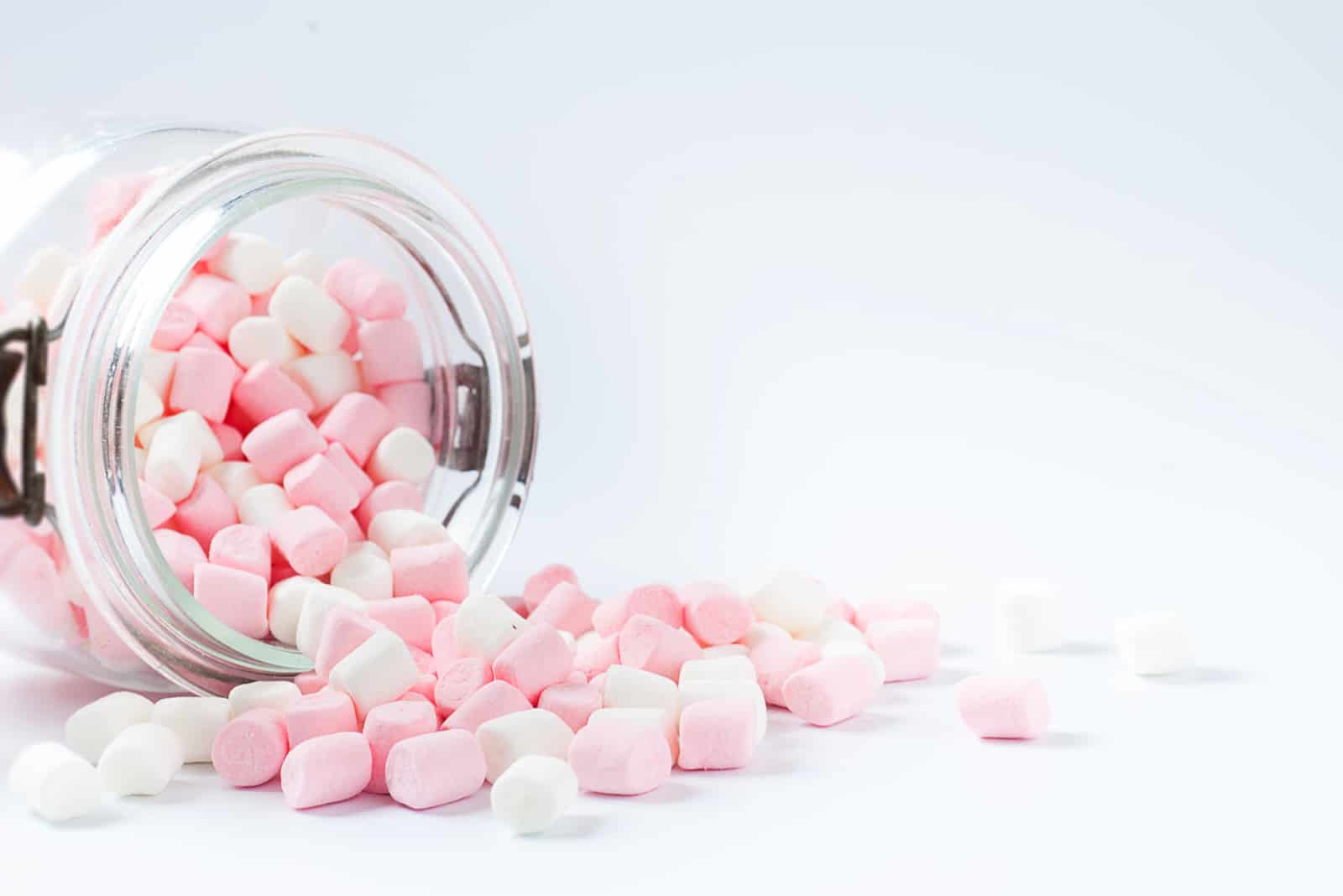
There is no safe amount of marshmallows to give your cat, considering that marshmallows themselves are not recommended for consumption.
As I previously said, they lead to feline obesity, teeth problems, have absolutely no nutritional benefits and may even pose a choking hazard.
Of course, your cat will be fine eating one marshmallow now and then, but to answer the question: no marshmallows is the safe amount, considering all the disadvantages they have. Their only advantage might be the cat liking the texture for about 2 seconds.
That’s not a good enough reason for me to give my cat marshmallows and I’m sure you will agree!
Suggested Read: Can Cats Eat Gingerbread? Learn More About Cat Safe Treats
What Is A Healthy Cat Diet Supposed To Look Like?
Proper nutrition is key to your cat living a long and healthy life.
We pet owners have a big task in making the right decisions about our house cat’s diet. So what should a cat’s diet look like?
Cats are obligate carnivores, so it is “in their genes” to need nutrition that comes from animal sources. Animal meat contains 20% protein, 2.5% fat and just over 1% of carbohydrates.
Essentially, a cat’s diet should look the same, meaning cats should eat a lot of lean protein, not a lot of fats, and very few carbohydrates.
A sugar-free diet is key to preventing many diseases, including feline obesity. Also, cats need their vitamins and minerals, but do not give food supplements to your cat as they can do more harm than good.
Cats can have human food, but not in large quantities. This means that you will need to buy cat food, because cat food is specially designed by experts who know exactly what your cat needs!
FAQ
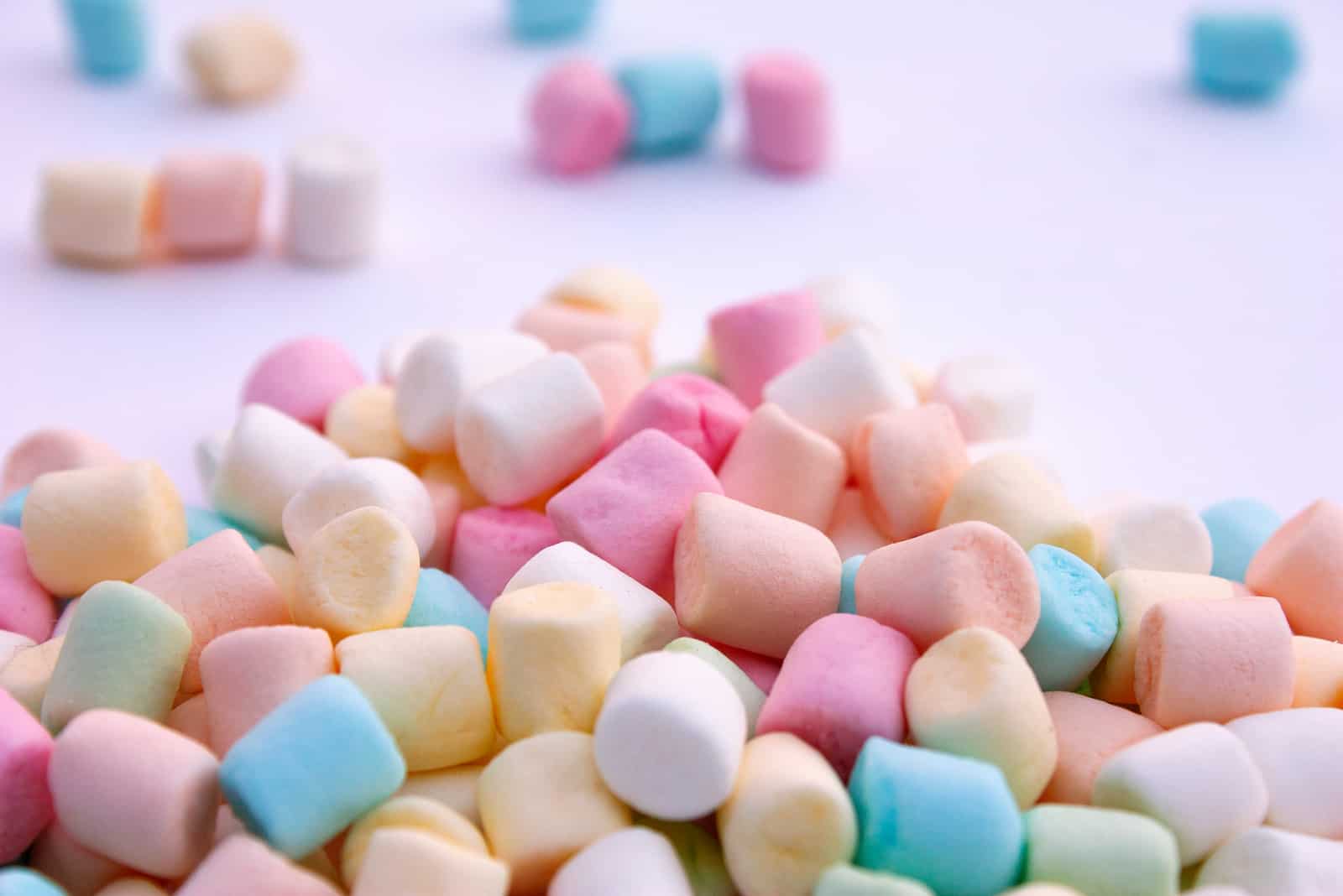
What Is The Main Ingredient In Marshmallows?
Sugar is the answer!
In 100g of marshmallows, there are 58 grams of sugar!
Remember that cats absolutely should not consume sugar. Why?
• They do not need sugar – they need protein in their diet
• Sugar leads to weight gain
• Sugar can be the cause of tooth problems
• High amounts of sugar ingestion leads to diabetes
Apart from sugar, marshmallow’s main ingredients are gelatin, corn syrup and artificial sweeteners. The composition of marshmallows really depends on the manufacturer, so there may be some other ingredients and chemicals added in.
Is It True That They Should Eat Them In Moderation?
You know what they say “Moderation is key to a healthy life”, well, this is true in this case too. The point is figuring out what moderation means when it comes to marshmallows.
Does it mean one marshmallow per day? Or two? Maybe one marshmallow per week or 10 marshmallows weekly?
Well, no scientific studies have been conducted in order for me to give you the right answer. From what I know, my answer would be: 0 marshmallows ever.
There is just no need for you to use them in your cat’s diet and I am sure you can find a cat treat that is a million times better than a marshmallow!
Can Cats Eat Mini Marshmallows?
Well mini marshmallows are still marshmallows!
They are a bit better for your cat because of their size, so they don’t pose such a choking hazard as large marshmallows do.
Still, they are not healthy, just like regular marshmallows. Also, because they’re smaller, you might actually be tempted to give your cat more of them than you would if they were larger.
If, at the end of the day, your cat ate 2x 4g marshmallows, instead of 1x 7g marshmallow, you have only fooled yourself!
Can Cats Eat Marshmallow Fluff?
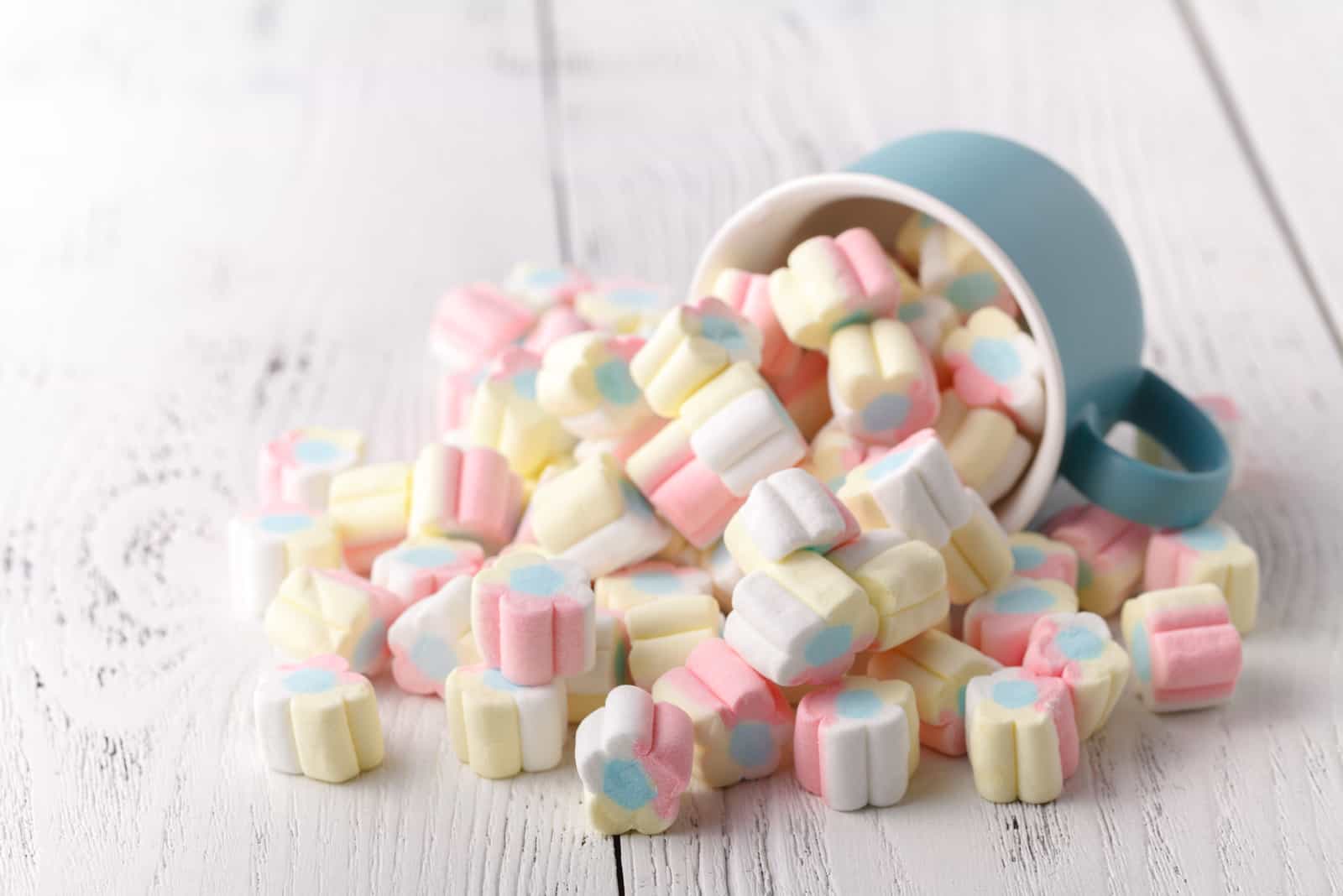
Marshmallow fluff is essentially marshmallow creme. The ingredients are the same, but the marshmallow is in the form of a spread or a creme.
I am going to let you answer this question yourself!
Considering all the ingredients are still the same, the same goes for marshmallow fluff.
What Sweets Can Cats Eat?
Well, your cat can eat a very small amount of sweets, but only occasionally.
Cats do not taste sweets the same as we do. They actually don’t taste the sweetness because they lack the receptors for sweetness in their tongue. So why bother giving it to them?
Cats may like the texture of the treat or the taste of some other ingredients, and that’s why you might be tempted to give your cat the sweet treat. The key is limiting the amount!
A couple of signs your cat has eaten a lot of sweets are:
• Vomiting
• Diarrhea
• Gas
• General weakness and feeling of discomfort
Eating a lot of sweets can cause health issues, such as:
• Oral health problems (such as tooth problems)
• Weight gain
• Diabetes
• Other health issues
Nevertheless, healthy sweets you can give your cat include tiny bits of cantaloupe or watermelon (which is high in vitamin A).
In most cases, cats are not a huge fan of “healthy, homemade” treats, so your best choice is to buy a bag of cat treats from your local pet store. You will also never find sweet cat treats, since cats cannot taste sugar, nor is eating it healthy for them.
In Conclusion
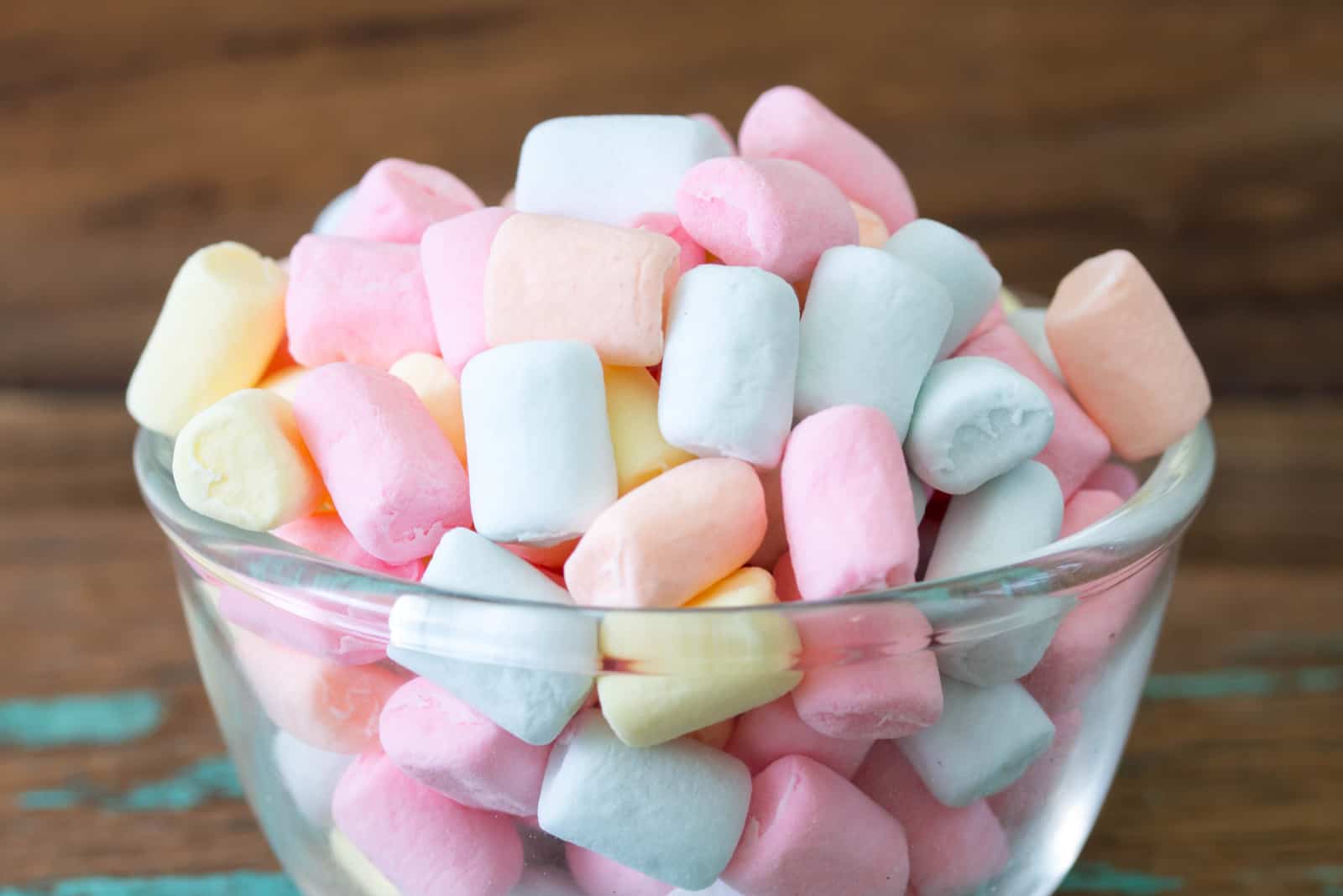
Cat parents, I know you have a soft spot for your pet. It really is hard to say No to them asking for a treat with their adorable eyes.
However, you have the important task of maintaining your pet’s health. A healthy cat’s diet is supposed to be filled with animal-derived protein, a low amount of fat and a very low amount of carbohydrates (sugars). Of course, your cat needs vitamins, minerals, and other essential nutrients too..
We know cats love their treats and we love giving them to them! Sadly, marshmallows are not a healthy treat option.
They can be a contributor to feline obesity, are a choking hazard and have absolutely no health benefits to them. There are far better treat options than marshmallows.
It’s best if you avoid giving your cat marshmallows all together, but if you know your cat likes an occasional marshmallow here and there – it really isn’t an issue!
Now you know the answer to Can cats eat marshmallows?! Whether you decide to stop giving this treat altogether, or just minimize the amount you give your cat, I know you will keep your cat perfectly healthy!

